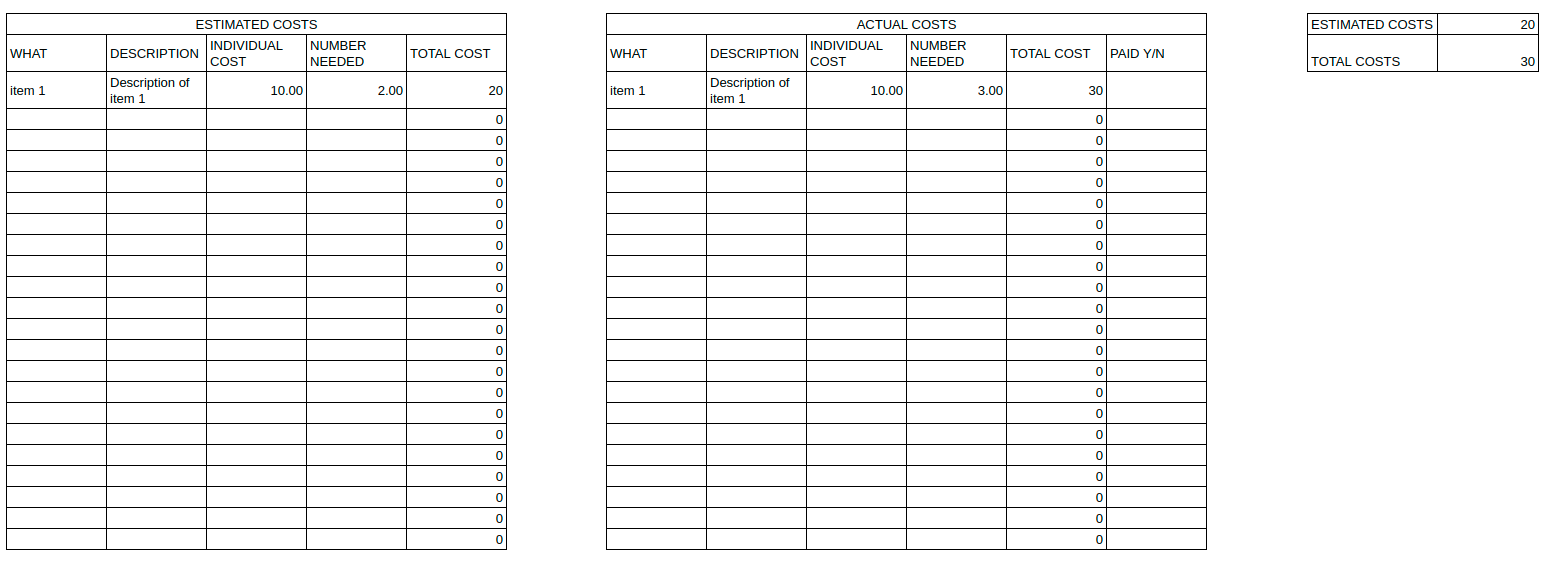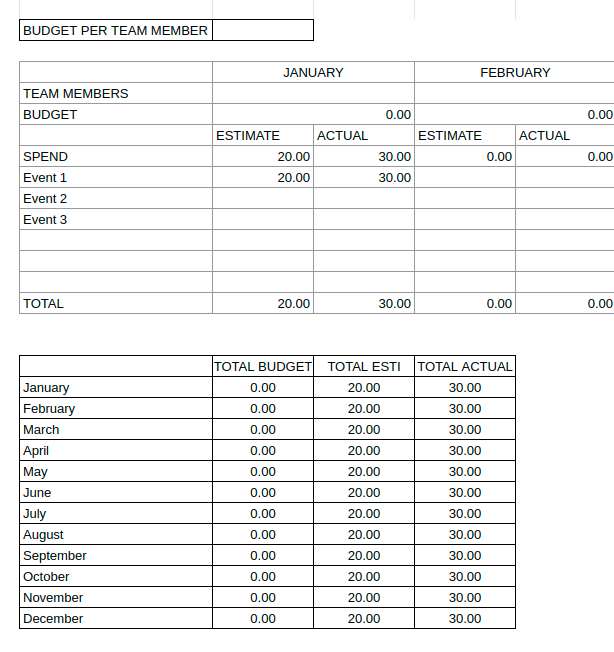Why you need an event budget... and how to get one
This is part 2 of my Work Events: More Than Organised Fun series. You can find the other sections here.
A successful event calendar should be run with the precision of any project with clear KPIs, reporting and tangible feedback. A key aspect of this is budget.
Developing and maintaining a budget has three main benefits:
- accurate tracking of your expenditure,
- identification of cost savings
- future spend planning
A well-maintained budget can also inform and evidence budget increase requests.

How to justify your budget
Asking for budget can be daunting. Prepare with clear justifications and a budget proposal and you will be half way there.
Decide how much budget you can request
When building a budget request, I begin with cost per head: how much per person per month will I need to run successful events? This means I can tweak my budget before settling on something realistic.
- Speak with HR/People Ops to understand current and future headcounts. These numbers will inform how much budget you are likely to need each month.
- Think about the type of events you want to run: are they remote or office-based? Are there any big bang annual events (ie Christmas) that you need to budget for? Are there any one-off costs ie a branded photo wall? Next, make a list split between must have and nice to have events. Doing this now will make it easier if you need to cut events. Finally, make a note of any anything you can reuse, for example investing in good quality table cloths or cameras you can use for more than one event.
- Develop your budget. This will differ depending on the types of event you are going to run. If most of your events are remote, 20 GBP / 25 USD per team member per month could cover all the necessary costs, whereas in-person events might need 80 GBP / 100 USD per team member per month.
Decide on your reasons
Whether you decide you need 20 GBP or 100 GBP per team member per month, make sure you know why you are requesting that amount. These could be the benefits discussed here or specific to your team or company. Create your list and prepare your evidence, focusing on the benefits for the team and company as a whole.
Discuss with the key decision makers.
Make sure you have a narrative; focus on the business reasons and take them on a journey.
What to do when this conversation goes positively?
Congratulations on securing your budget! Now to make sure you get the most from it.,
What to do when the conversation doesn't go as you had hoped?
If your budget was rejected for being too high, look at where you can make cuts. Work with the key decision maker to understand what would be a more acceptable budget, you can always ask for an increase later in the year.
If your budget was rejected outright, try and understand why. Does the decision maker not want to dedicate time to the events or do they not understand their value? Look at the justifications you presented, could you make those stronger?
How to set up and track your budget
Contents
Your budget should tell you at a glance -
- How much you have spent to date
- How much you have left to spend
Ideally, your budget will also show estimated vs actual costs, with a running total for both.
Tracking estimated costs has two key benefits:
- Earmarking any big spend early in the year gives you better oversight on your spend and allows you to allocate costs more efficiently throughout the rest of the year
- Comparing estimated and actual costs allows you to judge whether you are over/under-estimating costs. Coupled with participant feedback more on that here, you can make smarter allocation decisions going forward.
Finally, your budget should be easy to maintain and understand.
Method
Using either Excel or Google Sheets, I create a budget with worksheets per specific event. To save time, I also create blank sheets for future events. These worksheets include five columns with key pieces of information:
- What - make a list of everything you think you're going to need for this event, making sure to split each item out to its own row. For example, unless you are using a set menu, split food and beverages to avoid any nasty surprises.
- Description - in this column include any important notes or links related to the item.
- Individual cost - how much does the individual item cost.
- Number needed - the number of items needed. When estimating, use previous knowledge to understand how many you need. Keep in mind when looking at actual costs that there could be savings made when buying in bulk.
- Total cost - the individual cost x the number needed.
- Bonus for actual costs - Paid Y/N column to track payments.

I will repeat this for both estimated costs and actual costs, to track cost saving per event.
I then create an overview sheet allowing me to view all actual and estimated spend per year at a glance. I will list each event as a row and create columns for estimated and actual spend per month.

Finally, I link the event to the month in the Overview tab so that costs automatically populate as I update my spend.
Things to keep in mind
- Any other additional costs ie wifi, extra places
- Cancellation fees
- Worst case scenario - no one likes thinking of worst case scenarios, but make sure to include budget buffer for if something goes wrong
Next steps
Now that you have your budget sheet created, the next stage is to develop your calendar of events.
